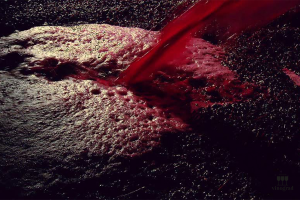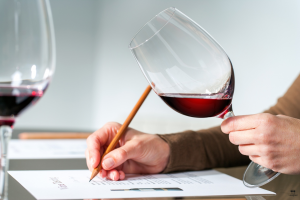Chilean wines
 Local wine producers call Chile the first native home of the vine in the New World. It would not sound pompous, but their words are not without meaning, because before the Chilean lands, they tried to cultivate grapes unsuccessfully in Peru, in the Caribbean, in Mexico.
Local wine producers call Chile the first native home of the vine in the New World. It would not sound pompous, but their words are not without meaning, because before the Chilean lands, they tried to cultivate grapes unsuccessfully in Peru, in the Caribbean, in Mexico.
Chilean wines
A good geographical location between the reliable peaks of the Andes, the Pacific Ocean and the dry Atacama was not the last component of the successful development of winemaking. This “isolation” protects the vines from the penetration of pests and diseases, which has reduced the use of chemicals in the fight against “grape diseases”. The Chilean climate played a special role in the development of winemaking: hot days (about 30 ° C) are replaced by cool nights (about 13 ° C). For grapes, such drops became a kind of preservative: integrity was preserved, and the taste qualities became stronger.
Frey Francisco de Carabantes was a pioneer for local winemaking, just 500 years ago brought Pais or Criolla (grape variety). Vine not only caught on, but quickly spread throughout the central part. Until the 19th century, only primitive methods of vinication were used in production, but with freedom, the fashion for everything French, including wine making, came to Chile. Elite varieties were imported, and the wineries were remade according to French rules.
The epidemic of phylloxera in the 19th century, which defeated most of the vineyards of the Old World, gave Chilean wines a chance to gain worldwide recognition. And they took advantage of it in full, winning not only many awards, and an infinite number of admirers. A period of decay followed a dizzying success: world wars, disagreements within the country almost ruined all winemaking. The revival began only in the 80s of the 20th century: new technologies were added, local wood tanks were replaced with stainless steel tanks and wooden barrels. There was also a clear list of varieties (14 reds, 14 whites) from which noble wines should be produced.
Today, Chile is in the top 5 wine-producing countries.
Chilean wines – quality wines of the Old World at an affordable price. A special feature of these drinks is considered to be a deep aroma and rich taste. The most popular among the white Chilean wines are drinks from Chardonnay and Sauvignon Blanc (a special bright taste with a tropical fruit bouquet). Merlot and Cabernet Sauvignon dominate the red wines.
As in the entire wine world, wines are classified here by cultivation and quality: table (Vinos de Mesa), wines with an uncontrolled production site, with a controlled production site.
Winemaking in Chile, in contrast to European countries, is not governed by strict standards. Therefore, wine categories are often not indicated on the bottle.
Our wine club gathered for you only the best representatives of this South American country: Don Melchor, Terrunyo Sauvignon Blanc, Casillero del Diablo Sauvignon Blanc.




